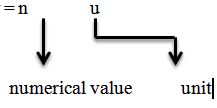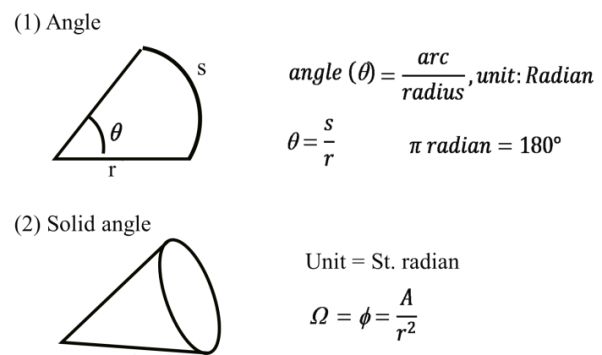UNITS AND DIMENSIONS
Units “ To measure or represent any physical quantity we need units”
Exception: Although there are few physical quantities which do not
need any unit like refractive index, Relative density or specific gravity etc.
Physical quantity

nu = Constant
![]()
Example: In a particular system, the unit of length,
mass and time are chosen to be 10cm, 10gm and 0.1 sec
respectively. The unit of force in this system will be
equivalen to:
- 0.1 N
- 1 N
- 10 N
- 100 N
Sol. Unit of force Þ F = ma = Kg metre /sec2
Here ![]()
F = 0.1 N So the Correct option is (a)
Example: The density of a material in CGS System of unit
is 4gm/cm3. In a system of units in which unit
of length is 10cm and unit of mass is 100 gm the
value of density of material will be
(a) 0.04
(b) 0.4
(c) 40
(d) 400
Solution. Given n1 u1 = 4 gm/cm3
n2 u2 = n1 u1
![]()
n2 = 40 Answer (a)
FUNDAMENTAL PHYSICAL QUANTITIES, UNITS, SYMBOLS

SUPPLEMENTARY UNITS

Derived Units: The units which may derive by
fundamental or Supplementry units
Ex. Force= ma = Kg mt/sec2
Conventions adopted while writing a unit
1. Even if a unit is named after a person it should
not be Capital initial letter.
Newton (no) Joule (no) Ampere (no)
or or etc.
newton (yes) joule (yes) ampere (yes)
2. In symbol for a unit named after a person
Newton ® N
Ampere ® A
Joule ® J
Watt ® w
3. The symbol or units are not expresse
d in plural form : 50 m (yes) , 10 joule (yes)
50 ms (no) , 10 joules (no)
4. Not more than one Solidus is used
1 poise = 1g/s cm or 1 gs-1

 Kaysons Publication
Kaysons Publication
